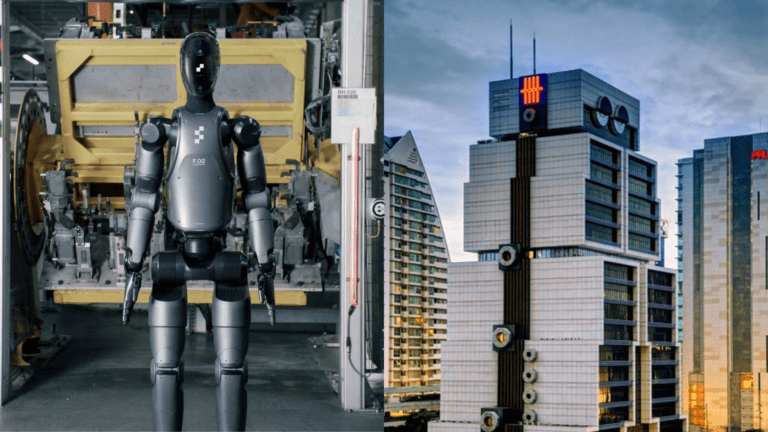Is a Humanoid Robot Really Training for the World’s First Half Marathon in China?
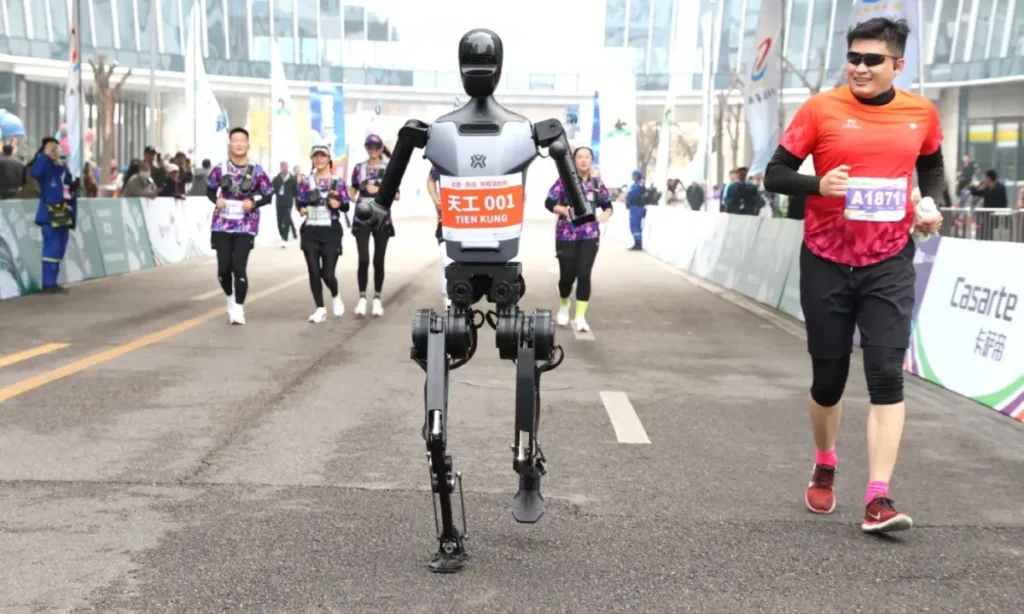
On March 4, residents of Beijing, China, were left both curious and amazed after spotting a humanoid robot preparing for a run just like any human athlete would. The footage of the robot warming up in anticipation of the world’s first-ever robot half-marathon quickly went viral, leaving many wondering what to expect when this historic race takes place in April. Let’s dive into what makes this event so unique and what the robot’s training reveals about the future of AI and robotics.
A Historic Race: Humans vs. Robots
The world’s first half-marathon is set to take place in Beijing on April 13, 2025, and it’s already generating plenty of buzz. The race will see humanoid robots compete against human runners, but with an exciting twist—the robots must complete the 13-mile race within a strict three-and-a-half-hour time limit. This marks a major milestone for both the field of robotics and the sports world, as it combines cutting-edge technology with a popular athletic competition.
Humanoid , which resemble humans in appearance and movement, have been in development for years. However, this will be the first time one has ever taken on such a challenging task. The event is seen as a test of both the robots’ endurance and their ability to adapt to the unpredictable environment of a long-distance race.
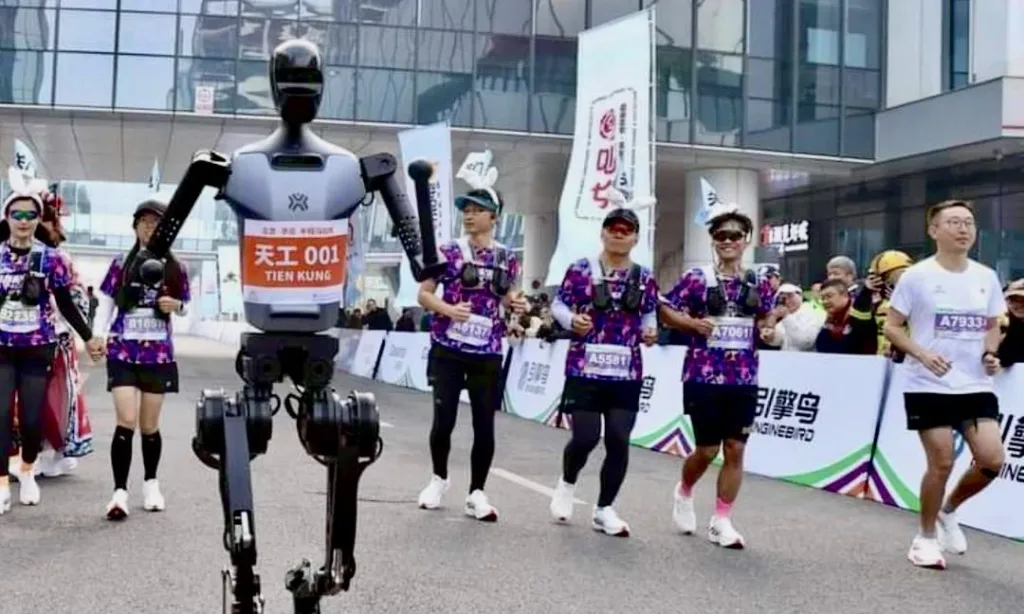
A Robot Prepares Like an Athlete
The footage of the humanoid training in Beijing offers a fascinating glimpse into how these are preparing for the event. Just like human athletes, the was seen doing warm-up exercises, stretching its legs, and preparing its joints for the intense physical activity ahead. These are equipped with advanced sensors and AI that allow them to assess their physical capabilities, just as a human would before a race.
The training process is critical because the has to be able to navigate the challenges of the racecourse, which may include changes in terrain, weather conditions, and the unexpected obstacles that come with running alongside humans. It’s a reminder that building a humanoid robot that can run 13 miles is no easy feat. It requires precision in movement, sophisticated engineering, and hours of preparation.
The Technology Behind the Robot Runner
At the core of the training and racing capabilities is advanced AI and robotics technology. The has been designed with human-like joints and limbs, enabling it to mimic human running motion. Additionally, the AI software is responsible for determining the robot’s pace, monitoring its energy levels, and adjusting its strategy as it runs.
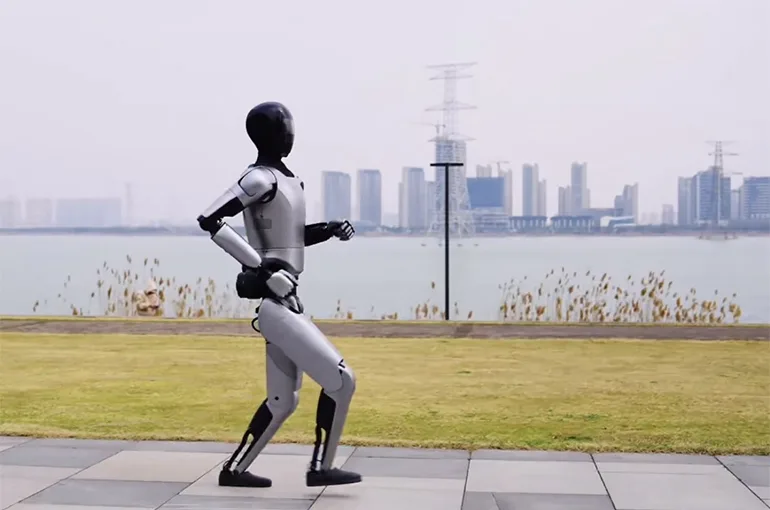
In training, the must also learn to adjust to the complexities of long-distance running. This involves optimizing energy consumption, managing body temperature, and avoiding fatigue. The sensors allow it to make real-time decisions based on data about its physical state, just like an athlete would listen to their body during a race.
While humanoid have previously been tested in controlled environments or for short distances, running a half-marathon is a whole new challenge. The 13-mile course will test the ability to maintain a consistent pace, avoid injury, and complete the race within the time limit.
The Race: Humans vs. Robots
The human runners in this competition will face a formidable opponent. The , though still relatively new to the field of sports, have been designed for high efficiency and precise movement, which could give them an edge in terms of endurance. However, they must still navigate the challenges of the physical world, which is unpredictable for even the most advanced machines.
The 13-mile race will see both humans and compete side by side, with the having a clear technological advantage. However, there are still questions about how well they will fare over such a long distance, especially with the three-and-a-half-hour time limit. The real question is whether robots can maintain their performance as the race progresses, or if human runners will prove more adaptable and resilient.
A Step Forward for AI and Robotics
The half-marathon in Beijing is more than just a race—it’s a significant moment for AI and . It marks the beginning of a new era in which are not only performing tasks like assembling products or assisting in surgeries, but also taking on physically demanding activities like running marathons.
This race could pave the way for more advanced competitions in the future, possibly involving in a range of sports. It may also have practical applications in areas such as search and rescue missions, where need to be able to navigate long distances and difficult environments.
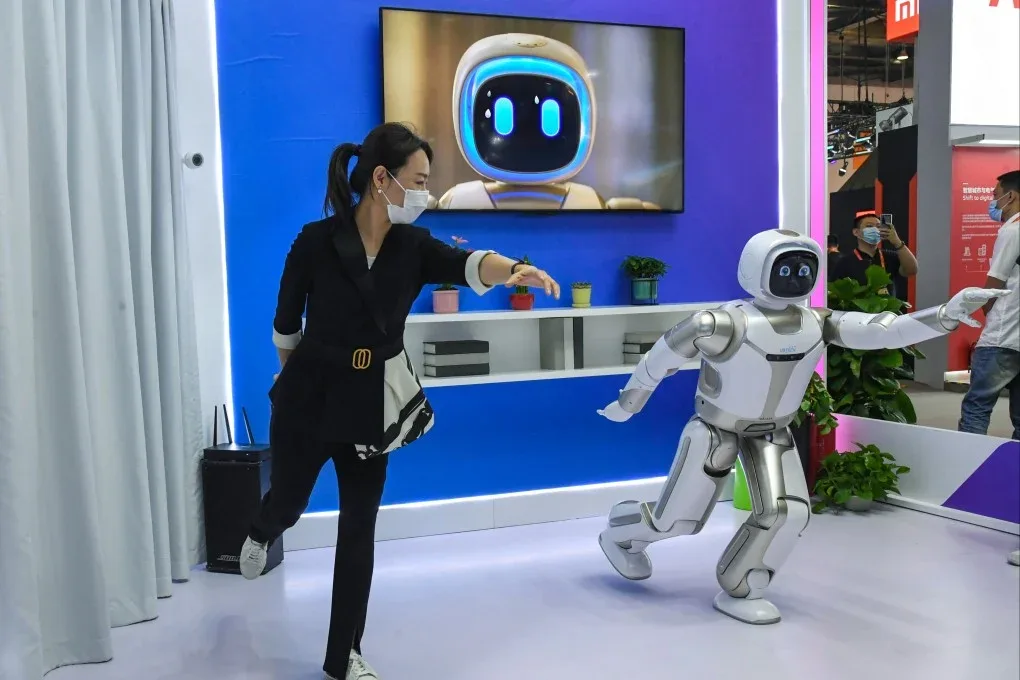
Conclusion: The Future of Robotics in Sports
As the world prepares for the first-ever half-marathon in Beijing, it’s clear that we’re on the verge of a new frontier in sports and technology. While robots competing alongside humans in a race might seem futuristic, it’s a powerful reminder of how far and AI have come. The April 13 race will not only be a spectacle to watch but also a defining moment in the evolution of humanoid robots and their place in our world.
Whether the humanoid finishes the race or not, one thing is certain: this groundbreaking event will set the stage for future technological innovations and inspire new possibilities in the world of sports and .





